Search Result
Results for "
neuronal voltage-gated sodium channels
" in MedChemExpress (MCE) Product Catalog:
8
Isotope-Labeled Compounds
| Cat. No. |
Product Name |
Target |
Research Areas |
Chemical Structure |
-
- HY-A0081
-
|
|
Dopamine Receptor
SARS-CoV
Sodium Channel
|
Neurological Disease
Cancer
|
|
Fluphenazine dihydrochloride is a potent, orally active phenothiazine-based dopamine receptor antagonist. Fluphenazine dihydrochloride blocks neuronal voltage-gated sodium channels. Fluphenazine dihydrochloride acts primarily through antagonism of postsynaptic dopamine-2 receptors in mesolimbic, nigrostriatal, and tuberoinfundibular neural pathways. Fluphenazine dihydrochloride can antagonize Methylphenidate-induced stereotyped gnawing and inhibit climbing behaviour in mice. Fluphenazine dihydrochloride can be used for researching psychosis and painful peripheral neuropathy associated with diabetes and has potential to inhibit SARS-CoV-2 .
|
-
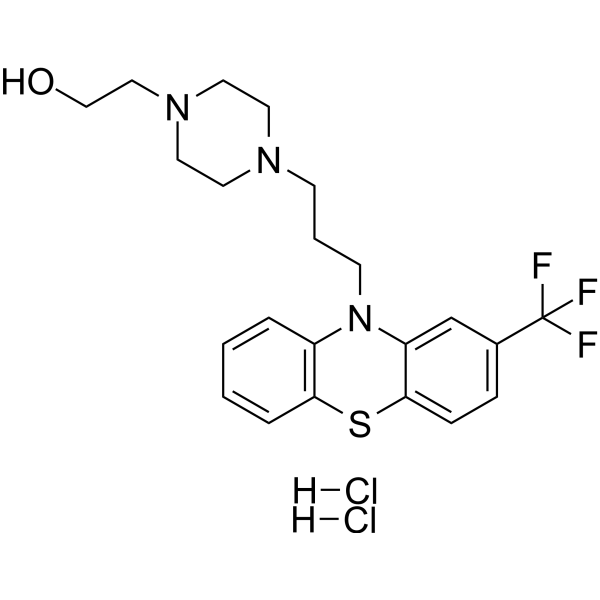
-
- HY-B0517A
-
|
|
Sodium Channel
|
Neurological Disease
|
|
Mepivacaine hydrochloride binds to specific voltage-gated sodium ion channels in neuronal cell membranes, which inhibits both sodium influx and membrane depolarization .
|
-
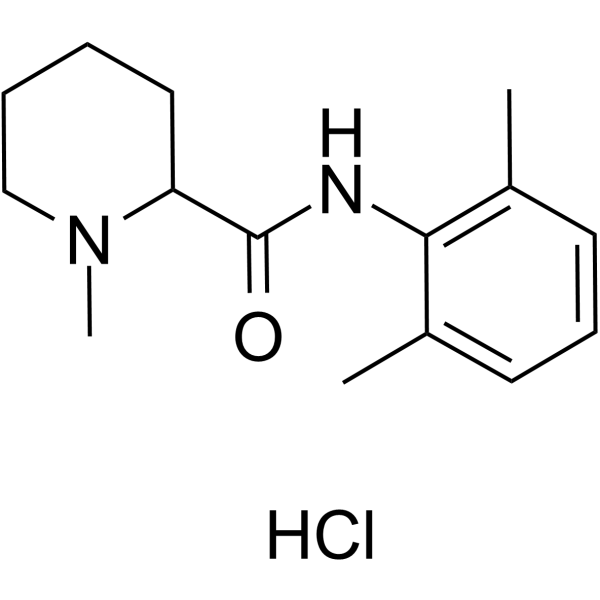
-
- HY-119980
-
|
|
Sodium Channel
Dopamine Receptor
SARS-CoV
|
Infection
Neurological Disease
|
|
Fluphenazine is a potent, orally active phenothiazine-based dopamine receptor antagonist. Fluphenazine blocks neuronal voltage-gated sodium channels. Fluphenazine acts primarily through antagonism of postsynaptic dopamine-2 receptors in mesolimbic, nigrostriatal, and tuberoinfundibular neural pathways. Fluphenazine can antagonize Methylphenidate-induced stereotyped gnawing and inhibit climbing behaviour in mice. Fluphenazine can be used for researching psychosis and painful peripheral neuropathy associated with diabetes and has potential to inhibit SARS-CoV-2 .
|
-

-
- HY-119980B
-
|
|
Dopamine Receptor
Sodium Channel
SARS-CoV
|
Neurological Disease
|
|
Fluphenazine hydrochloride is a potent, orally active phenothiazine-based dopamine receptor antagonist. Fluphenazine hydrochloride blocks neuronal voltage-gated sodium channels. Fluphenazine hydrochloride acts primarily through antagonism of postsynaptic dopamine-2 receptors in mesolimbic, nigrostriatal, and tuberoinfundibular neural pathways. Fluphenazine hydrochloride can antagonize Methylphenidate-induced stereotyped gnawing and inhibit climbing behaviour in mice. Fluphenazine hydrochloride can be used for researching psychosis and painful peripheral neuropathy associated with diabetes and has potential to inhibit SARS-CoV-2 .
|
-
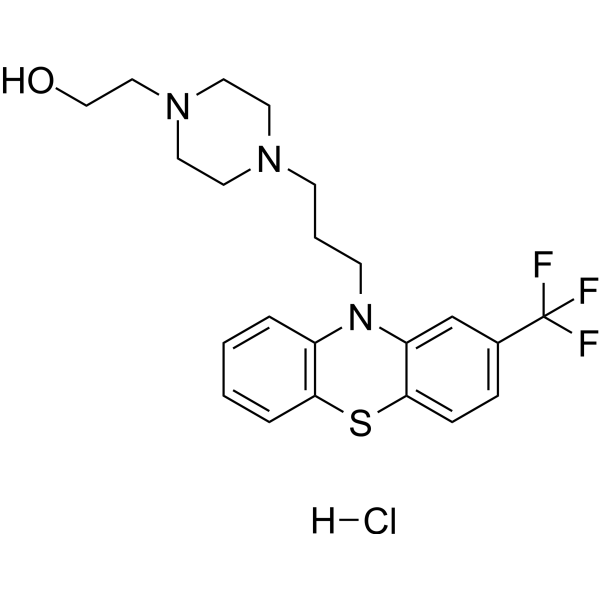
-
- HY-P5869
-
|
|
Calcium Channel
Sodium Channel
|
Neurological Disease
|
|
Kurtoxin is a selective Cav3 (T-type) voltage-gated Ca 2+ channel gating inhibitor with a Kd of 15 nM for Cav3.1 (α1G T-type) Ca 2+ channel. Kurtoxin can interact with high affinity with native neuronal high-threshold L-type, N-type, and P-type Ca 2+ channels in central and peripheral neurons. Kurtoxin also shows cross-reactivity with voltage-gated Na + channel .
|
-
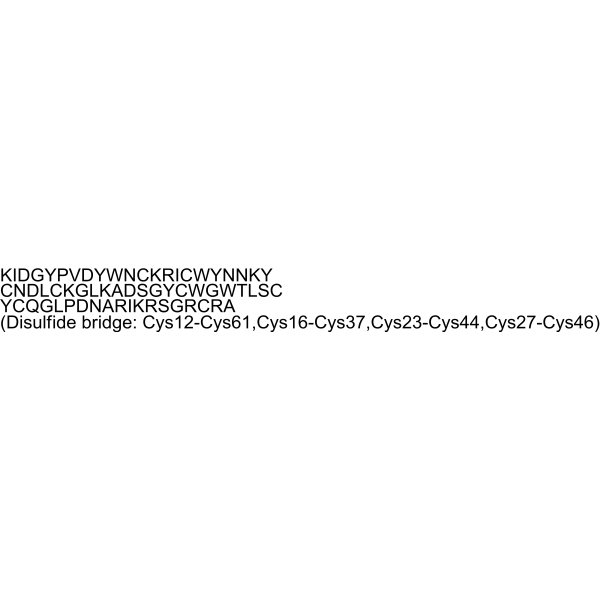
-
- HY-B0517
-
|
|
Sodium Channel
|
Neurological Disease
|
|
Mepivacaine is an amide-type local anesthetic agent. Mepivacaine binds to specific voltage-gated sodium ion channels in neuronal cell membranes, which inhibits both sodium influx and membrane depolarization .
|
-
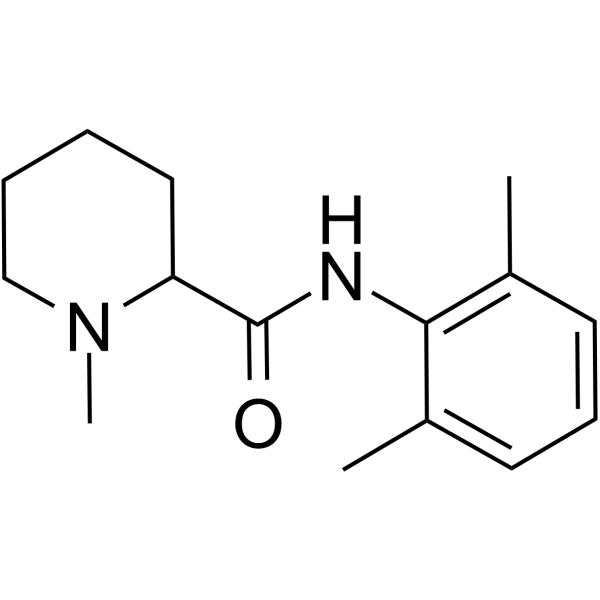
-
- HY-B0517AR
-
|
|
Sodium Channel
|
Neurological Disease
|
|
Mepivacaine (hydrochloride) (Standard) is the analytical standard of Mepivacaine (hydrochloride). This product is intended for research and analytical applications. Mepivacaine hydrochloride binds to specific voltage-gated sodium ion channels in neuronal cell membranes, which inhibits both sodium influx and membrane depolarization .
|
-
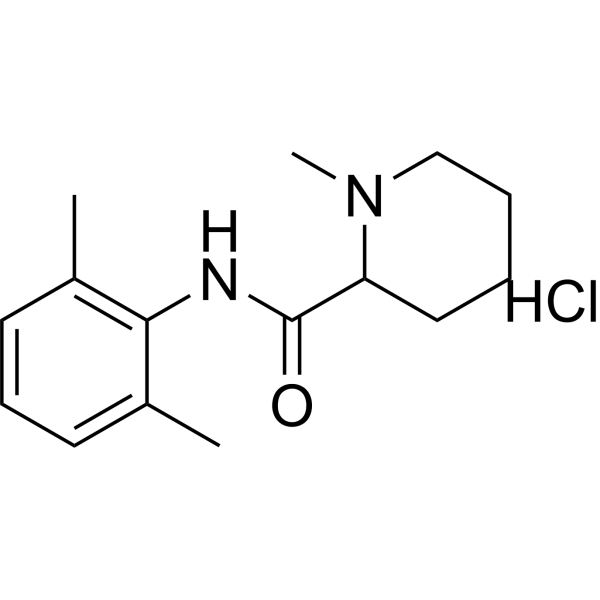
-
- HY-P5152
-
|
|
Sodium Channel
|
Neurological Disease
|
|
Scorpion toxin Tf2 is a β-scorpion toxin, which is firstly identified in the venom of the Brazilian scorpion Tityus fasciolatus. Scorpion toxin Tf2 is a Nav1.3 activator, which is a neuronal voltage-gated sodium (Nav) subtype implicated in epilepsy and nociception. Scorpion toxin Tf2 enhances hNav1.3 activation voltage and opens the channel at resting membrane potentials .
|
-

-
- HY-B0517S
-
|
|
Sodium Channel
|
Neurological Disease
|
|
Mepivacaine-d3 is the deuterium labeled Mepivacaine. Mepivacaine is an amide-type local anesthetic agent. Mepivacaine binds to specific voltage-gated sodium ion channels in neuronal cell membranes, which inhibits both sodium influx and membrane depolarization[1][2].
|
-
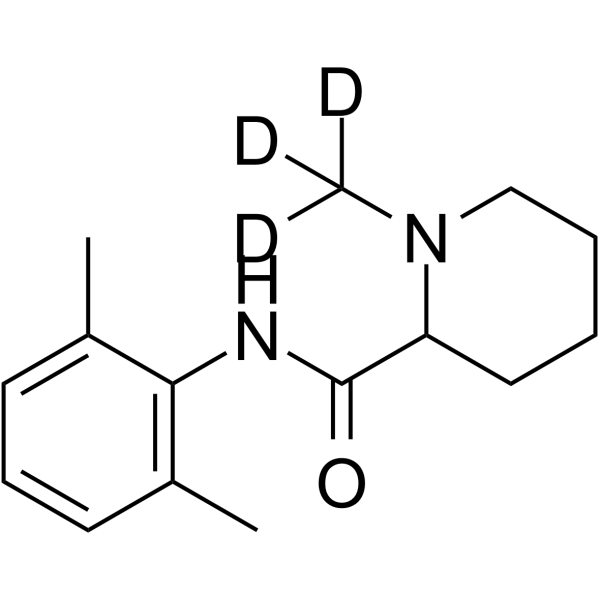
-
- HY-B0495A
-
|
LTG hydrate; BW430C hydrate
|
Sodium Channel
Autophagy
|
Neurological Disease
|
|
Lamotrigine hydrate is a potent and orally active anticonvulsant or antiepileptic agent. Lamotrigine hydrate selectively blocks voltage-gated Na + channels, stabilizing presynaptic neuronal membranes and inhibiting glutamate release. Lamotrigine hydrate can be used for the research of epilepsy, focal seizure, et al .
|
-
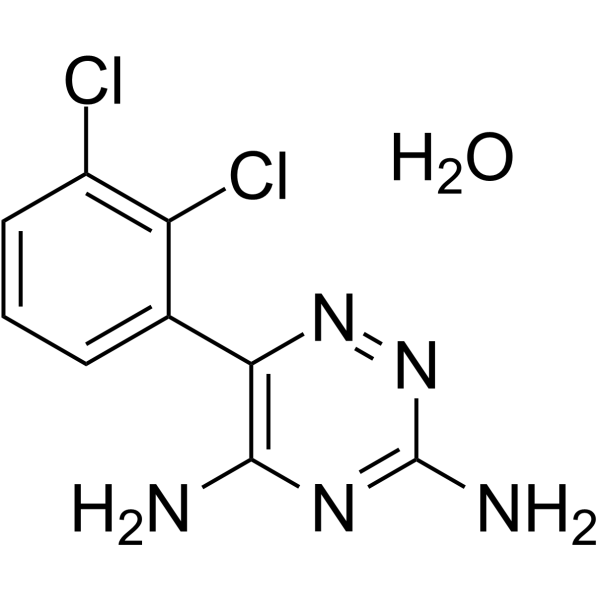
-
- HY-P5862
-
|
Mu-Conotoxin BuIIIB
|
Sodium Channel
|
Neurological Disease
|
|
μ-Conotoxin BuIIIB (Mu-Conotoxin BuIIIB) is a mammalian neuronal voltage-gated sodium channel (VGSC) blocker. μ-Conotoxin BuIIIB can be obtained from the venom of Cone snails and is a probe for ion channel function research. μ-Conotoxin BuIIIB can be used in the study of neurological diseases such as pain .
|
-
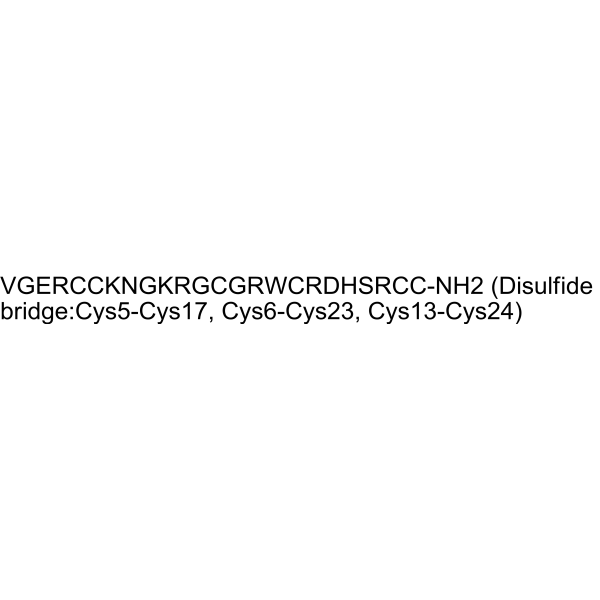
-
- HY-B0495
-
Lamotrigine
Maximum Cited Publications
6 Publications Verification
LTG; BW430C
|
Sodium Channel
Autophagy
|
Neurological Disease
|
|
Lamotrigine (BW430C) is a potent and orally active anticonvulsant or antiepileptic agent. Lamotrigine selectively blocks voltage-gated Na + channels, stabilizing presynaptic neuronal membranes and inhibiting glutamate release. Lamotrigine can be used for the research of epilepsy, focal seizure, et al .
|
-
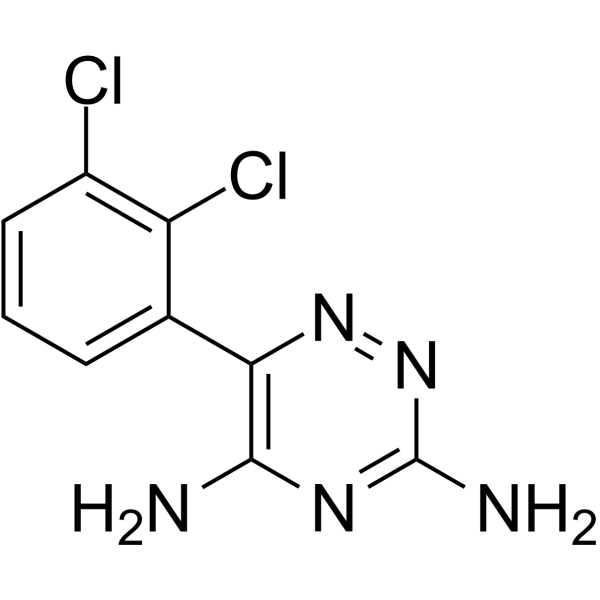
-
- HY-119961
-
|
Dexivacaine; (S)-Mepivacaine
|
Others
|
Cardiovascular Disease
|
|
(+)-Mepivacaine is a racemic isomer of Mepivacaine (HY-B0517), which has analgesic and vasoconstrictive activity. Mepivacaine is an amide type agent that temporarily causes local loss of consciousness. Mepivacaine binds to specific voltage-gated sodium channels on neuronal cell membranes, inhibiting sodium influx and membrane depolarization .
|
-
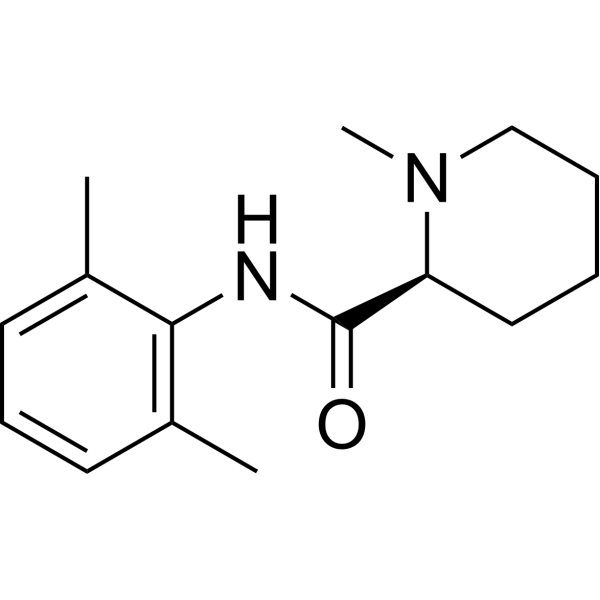
-
- HY-P5141
-
|
|
Sodium Channel
|
Inflammation/Immunology
|
|
μ-Conotoxin KIIIA is an analgesic μ-conotoxin that can be isolated from Conus kinoshitai. μ-Conotoxin KIIIA blocks mammalian neuronal voltage-gated sodium channels (VGSCs) (Nav1.2).μ-Conotoxin KIIIA can be used for research of pain .
|
-
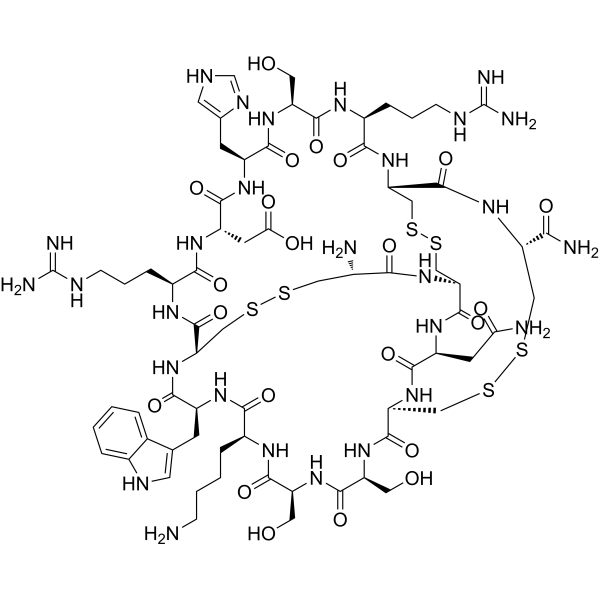
-
- HY-110032
-
|
LTG isethionate; BW430C isethionate
|
Sodium Channel
Autophagy
|
Neurological Disease
Cancer
|
|
Lamotrigine (BW430C) isethionate is a potent and orally active anticonvulsant or antiepileptic agent. Lamotrigine isethionate selectively blocks voltage-gated Na + channels, stabilizing presynaptic neuronal membranes and inhibiting glutamate release. Lamotrigine isethionate can be used for the research of epilepsy, focal seizure, et al .
|
-
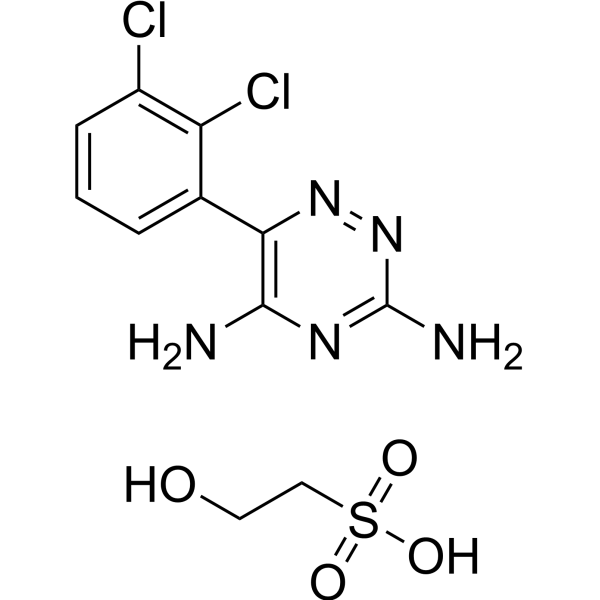
-
- HY-P5141A
-
|
|
Sodium Channel
|
Inflammation/Immunology
|
|
μ-Conotoxin KIIIA TFA is an analgesic μ-conotoxin that can be isolated from Conus kinoshitai. μ-Conotoxin KIIIA blocks mammalian neuronal voltage-gated sodium channels (VGSCs) (Nav1.2). μ-Conotoxin KIIIA TFA can be used for research of pain .
|
-
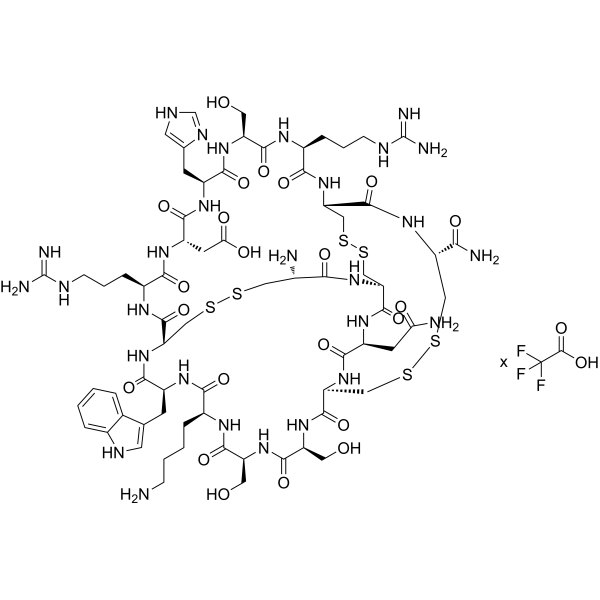
-
- HY-A0082
-
|
Difenidol hydrochloride
|
mAChR
Sodium Channel
|
Neurological Disease
|
|
Diphenidol hydrochloride (Difenidol hydrochloride) is a non-selective muscarinic M1-M4 receptor antagonist, has anti-arrhythmic activity. Diphenidol hydrochloride is also a potent non-specific blocker of voltage-gated ion channels (Na +, K +, and Ca 2+) in neuronal cells. Diphenidol hydrochloride can be used in the study of antivertigo and antinausea .
|
-

-
- HY-A0270
-
|
|
mAChR
Sodium Channel
|
Neurological Disease
|
|
Diphenidol is a non-selective muscarinic M1-M4 receptor antagonist, has anti-arrhythmic activity. Diphenidol is also a potent non-specific blocker of voltage-gated ion channels (Na +, K +, and Ca 2+) in neuronal cells. Diphenidol can be used in the study of antivertigo and antinausea .
|
-

-
- HY-B0495S4
-
|
LTG-13C3; BW430C-13C3
|
Sodium Channel
Autophagy
|
Neurological Disease
|
|
Lamotrigine- 13C3 is the 13C-labeled Lamotrigine. Lamotrigine (BW430C) is a potent and orally active anticonvulsant or antiepileptic agent. Lamotrigine selectively blocks voltage-gated Na+ channels, stabilizing presynaptic neuronal membranes and inhibiting glutamate release. Lamotrigine can be used for the research of epilepsy, focal seizure, et al[1][2].
|
-

-
- HY-B0495S5
-
|
LTG-d3; BW430C-d3
|
Autophagy
Sodium Channel
|
|
|
Lamotrigine-d3 is the deuterium labeled Lamotrigine[1]. Lamotrigine (BW430C) is a potent and orally active anticonvulsant or antiepileptic agent. Lamotrigine selectively blocks voltage-gated Na+ channels, stabilizing presynaptic neuronal membranes and inhibiting glutamate release. Lamotrigine can be used for the research of epilepsy, focal seizure, et al[2][3].
|
-

-
- HY-B0339
-
|
|
Sodium Channel
|
Neurological Disease
|
|
Primidone is a potent anticonvulsant agent of the barbiturate class. Primidone is a neuronal voltage-gated sodium channel (VGSC) blocker and can be used for the study of epilepsy, essential tremor, and Psychiatric disorders .
|
-
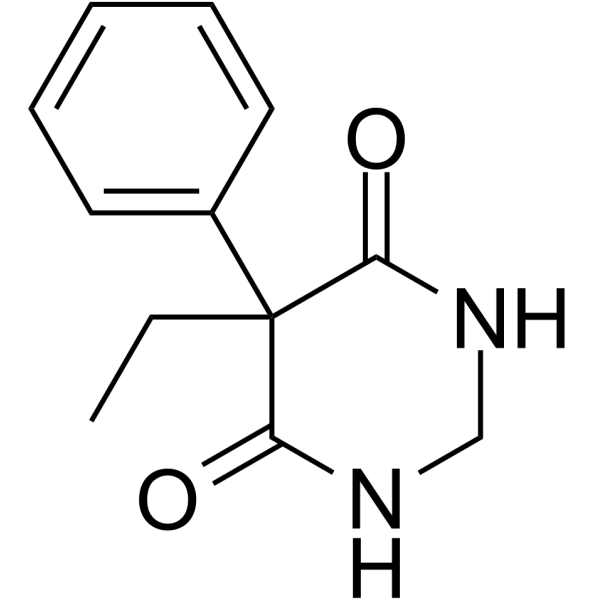
-
- HY-B0495S1
-
|
LTG-13C,d3; BW430C-13C,d3
|
Isotope-Labeled Compounds
Sodium Channel
Autophagy
|
Neurological Disease
|
|
Lamotrigine- 13C,d3 is the 13C- and deuterium labeled Lamotrigine. Lamotrigine (BW430C) is a potent and orally active anticonvulsant or antiepileptic agent. Lamotrigine selectively blocks voltage-gated Na+ channels, stabilizing presynaptic neuronal membranes and inhibiting glutamate release. Lamotrigine can be used for the research of epilepsy, focal seizure, et al[1][2].
|
-

-
- HY-B0495S
-
|
LTG-13C3,d3; BW430C-13C3,d3
|
Sodium Channel
Autophagy
|
Neurological Disease
|
|
Lamotrigine- 13C3,d3 is the 13C-labeled Lamotrigine. Lamotrigine (BW430C) is a potent and orally active anticonvulsant or antiepileptic agent. Lamotrigine selectively blocks voltage-gated Na+ channels, stabilizing presynaptic neuronal membranes and inhibiting glutamate release. Lamotrigine can be used for the research of epilepsy, focal seizure, et al[1][2].
|
-

-
- HY-B0495S3
-
|
|
Autophagy
Sodium Channel
|
|
|
Lamotrigine-13C2,15N is the 13C and 15N labeled Lamotrigine[1]. Lamotrigine (BW430C) is a potent and orally active anticonvulsant or antiepileptic agent. Lamotrigine selectively blocks voltage-gated Na+ channels, stabilizing presynaptic neuronal membranes and inhibiting glutamate release. Lamotrigine can be used for the research of epilepsy, focal seizure, et al[2][3].
|
-

-
- HY-B0339S
-
|
|
Sodium Channel
|
Neurological Disease
|
|
Primidone-d5 is the deuterium labeled Primidone. Primidone is a potent anticonvulsant agent of the barbiturate class. Primidone is a neuronal voltage-gated sodium channel (VGSC) blocker and can be used for the study of epilepsy, essential tremor, and Psychiatric disorders[1].
|
-

-
- HY-B0339R
-
|
|
Sodium Channel
|
Neurological Disease
|
|
Primidone (Standard) is the analytical standard of Primidone. This product is intended for research and analytical applications. Primidone is a potent anticonvulsant agent of the barbiturate class. Primidone is a?neuronal?voltage-gated sodium channel (VGSC) blocker and can be used for the study of epilepsy, essential tremor, and Psychiatric disorders .
|
-
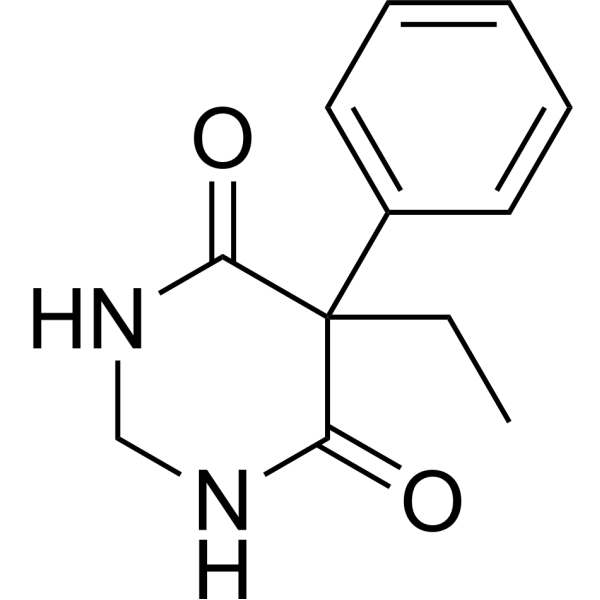
-
- HY-119980A
-
|
|
Dopamine Receptor
Sodium Channel
SARS-CoV
|
Infection
Neurological Disease
|
|
Fluphenazine dimaleate is a potent, orally active phenothiazine-based dopamine receptor antagonist. Fluphenazine dimaleate blocks neuronal voltage-gated sodium channels. Fluphenazine dimaleate acts primarily through antagonism of postsynaptic dopamine-2 receptors in mesolimbic, nigrostriatal, and tuberoinfundibular neural pathways. Fluphenazine dimaleate can antagonize Methylphenidate-induced stereotyped gnawing and inhibit climbing behaviour in mice. Fluphenazine dimaleate can be used for researching psychosis and painful peripheral neuropathy associated with diabetes and has potential to inhibit SARS-CoV-2 .
|
-
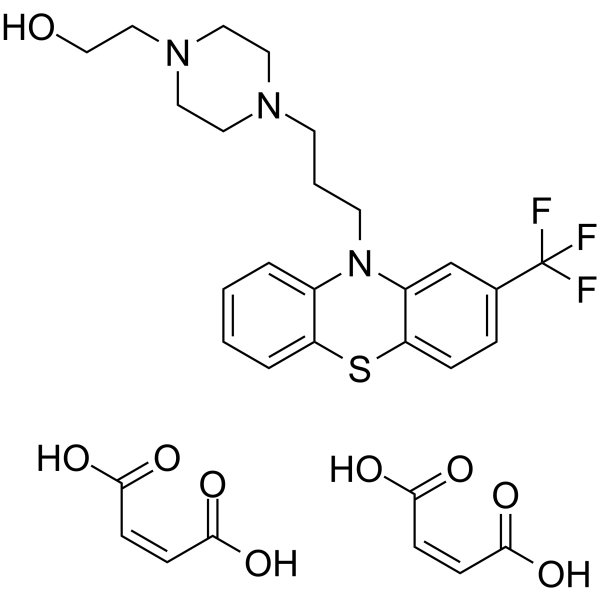
-
- HY-119980S
-
|
|
Isotope-Labeled Compounds
Sodium Channel
Dopamine Receptor
SARS-CoV
|
Others
|
|
Fluphenazine-d8 is the deuterium labeled Fluphenazine. Fluphenazine is a potent, orally active phenothiazine-based dopamine receptor antagonist. Fluphenazine blocks neuronal voltage-gated sodium channels. Fluphenazine acts primarily through antagonism of postsynaptic dopamine-2 receptors in mesolimbic, nigrostriatal, and tuberoinfundibular neural pathways. Fluphenazine can antagonize Methylphenidate-induced stereotyped gnawing and inhibit climbing behaviour in mice. Fluphenazine can be used for researching psychosis and painful peripheral neuropathy associated with diabetes and has potential to inhibit SARS-CoV-2 .
|
-
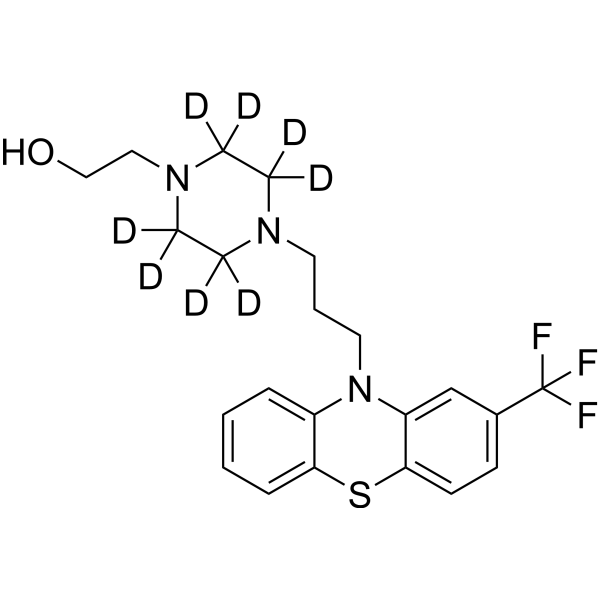
-
- HY-A0081R
-
|
|
Dopamine Receptor
SARS-CoV
Sodium Channel
|
Neurological Disease
Cancer
|
|
Fluphenazine (dihydrochloride) (Standard) is the analytical standard of Fluphenazine (dihydrochloride). This product is intended for research and analytical applications. Fluphenazine dihydrochloride is a potent, orally active phenothiazine-based dopamine receptor antagonist. Fluphenazine dihydrochloride blocks neuronal voltage-gated sodium channels. Fluphenazine dihydrochloride acts primarily through antagonism of postsynaptic dopamine-2 receptors in mesolimbic, nigrostriatal, and tuberoinfundibular neural pathways. Fluphenazine dihydrochloride can antagonize Methylphenidate-induced stereotyped gnawing and inhibit climbing behaviour in mice. Fluphenazine dihydrochloride can be used for researching psychosis and painful peripheral neuropathy associated with diabetes and has potential to inhibit SARS-CoV-2 .
|
-

| Cat. No. |
Product Name |
Target |
Research Area |
-
- HY-P5869
-
|
|
Calcium Channel
Sodium Channel
|
Neurological Disease
|
|
Kurtoxin is a selective Cav3 (T-type) voltage-gated Ca 2+ channel gating inhibitor with a Kd of 15 nM for Cav3.1 (α1G T-type) Ca 2+ channel. Kurtoxin can interact with high affinity with native neuronal high-threshold L-type, N-type, and P-type Ca 2+ channels in central and peripheral neurons. Kurtoxin also shows cross-reactivity with voltage-gated Na + channel .
|
-
- HY-P5152
-
|
|
Sodium Channel
|
Neurological Disease
|
|
Scorpion toxin Tf2 is a β-scorpion toxin, which is firstly identified in the venom of the Brazilian scorpion Tityus fasciolatus. Scorpion toxin Tf2 is a Nav1.3 activator, which is a neuronal voltage-gated sodium (Nav) subtype implicated in epilepsy and nociception. Scorpion toxin Tf2 enhances hNav1.3 activation voltage and opens the channel at resting membrane potentials .
|
-
- HY-P5862
-
|
Mu-Conotoxin BuIIIB
|
Sodium Channel
|
Neurological Disease
|
|
μ-Conotoxin BuIIIB (Mu-Conotoxin BuIIIB) is a mammalian neuronal voltage-gated sodium channel (VGSC) blocker. μ-Conotoxin BuIIIB can be obtained from the venom of Cone snails and is a probe for ion channel function research. μ-Conotoxin BuIIIB can be used in the study of neurological diseases such as pain .
|
-
- HY-P5141
-
|
|
Sodium Channel
|
Inflammation/Immunology
|
|
μ-Conotoxin KIIIA is an analgesic μ-conotoxin that can be isolated from Conus kinoshitai. μ-Conotoxin KIIIA blocks mammalian neuronal voltage-gated sodium channels (VGSCs) (Nav1.2).μ-Conotoxin KIIIA can be used for research of pain .
|
-
- HY-P5141A
-
|
|
Sodium Channel
|
Inflammation/Immunology
|
|
μ-Conotoxin KIIIA TFA is an analgesic μ-conotoxin that can be isolated from Conus kinoshitai. μ-Conotoxin KIIIA blocks mammalian neuronal voltage-gated sodium channels (VGSCs) (Nav1.2). μ-Conotoxin KIIIA TFA can be used for research of pain .
|
| Cat. No. |
Product Name |
Chemical Structure |
-
- HY-B0517S
-
|
|
|
Mepivacaine-d3 is the deuterium labeled Mepivacaine. Mepivacaine is an amide-type local anesthetic agent. Mepivacaine binds to specific voltage-gated sodium ion channels in neuronal cell membranes, which inhibits both sodium influx and membrane depolarization[1][2].
|
-

-
- HY-B0495S5
-
|
|
|
Lamotrigine-d3 is the deuterium labeled Lamotrigine[1]. Lamotrigine (BW430C) is a potent and orally active anticonvulsant or antiepileptic agent. Lamotrigine selectively blocks voltage-gated Na+ channels, stabilizing presynaptic neuronal membranes and inhibiting glutamate release. Lamotrigine can be used for the research of epilepsy, focal seizure, et al[2][3].
|
-

-
- HY-B0495S4
-
|
|
|
Lamotrigine- 13C3 is the 13C-labeled Lamotrigine. Lamotrigine (BW430C) is a potent and orally active anticonvulsant or antiepileptic agent. Lamotrigine selectively blocks voltage-gated Na+ channels, stabilizing presynaptic neuronal membranes and inhibiting glutamate release. Lamotrigine can be used for the research of epilepsy, focal seizure, et al[1][2].
|
-

-
- HY-B0495S1
-
|
|
|
Lamotrigine- 13C,d3 is the 13C- and deuterium labeled Lamotrigine. Lamotrigine (BW430C) is a potent and orally active anticonvulsant or antiepileptic agent. Lamotrigine selectively blocks voltage-gated Na+ channels, stabilizing presynaptic neuronal membranes and inhibiting glutamate release. Lamotrigine can be used for the research of epilepsy, focal seizure, et al[1][2].
|
-

-
- HY-B0495S
-
|
|
|
Lamotrigine- 13C3,d3 is the 13C-labeled Lamotrigine. Lamotrigine (BW430C) is a potent and orally active anticonvulsant or antiepileptic agent. Lamotrigine selectively blocks voltage-gated Na+ channels, stabilizing presynaptic neuronal membranes and inhibiting glutamate release. Lamotrigine can be used for the research of epilepsy, focal seizure, et al[1][2].
|
-

-
- HY-B0495S3
-
|
|
|
Lamotrigine-13C2,15N is the 13C and 15N labeled Lamotrigine[1]. Lamotrigine (BW430C) is a potent and orally active anticonvulsant or antiepileptic agent. Lamotrigine selectively blocks voltage-gated Na+ channels, stabilizing presynaptic neuronal membranes and inhibiting glutamate release. Lamotrigine can be used for the research of epilepsy, focal seizure, et al[2][3].
|
-

-
- HY-B0339S
-
|
|
|
Primidone-d5 is the deuterium labeled Primidone. Primidone is a potent anticonvulsant agent of the barbiturate class. Primidone is a neuronal voltage-gated sodium channel (VGSC) blocker and can be used for the study of epilepsy, essential tremor, and Psychiatric disorders[1].
|
-

-
- HY-119980S
-
|
|
|
Fluphenazine-d8 is the deuterium labeled Fluphenazine. Fluphenazine is a potent, orally active phenothiazine-based dopamine receptor antagonist. Fluphenazine blocks neuronal voltage-gated sodium channels. Fluphenazine acts primarily through antagonism of postsynaptic dopamine-2 receptors in mesolimbic, nigrostriatal, and tuberoinfundibular neural pathways. Fluphenazine can antagonize Methylphenidate-induced stereotyped gnawing and inhibit climbing behaviour in mice. Fluphenazine can be used for researching psychosis and painful peripheral neuropathy associated with diabetes and has potential to inhibit SARS-CoV-2 .
|
-

Your information is safe with us. * Required Fields.
Inquiry Information
- Product Name:
- Cat. No.:
- Quantity:
- MCE Japan Authorized Agent:





































